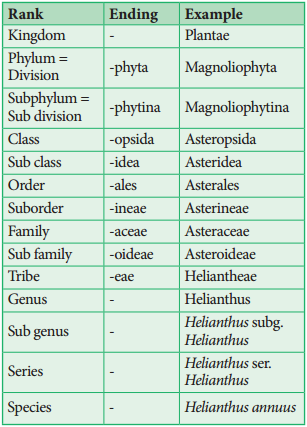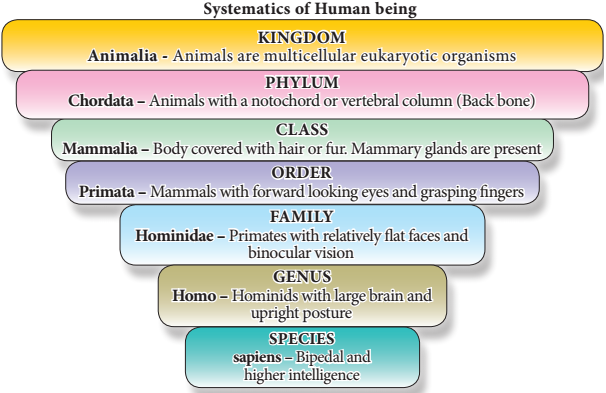Learninsta presents the core concepts of Biology with high-quality research papers and topical review articles.
Taxonomic Hierarchy
Taxonomic hierarchy was introduced by Carolus Linnaeus. It is the arrangement of various taxonomic levels in descending order starting from kingdom up to species. Kingdom is the highest level or rank of the classification. Example: Plantae

“Taxonomic hierarchy is the process of arranging various organisms into successive levels of the biological classification either in a decreasing or an increasing order from kingdom to species and vice versa.” Each of this level of the hierarchy is called the taxonomic category or rank.
The current taxonomic system now has eight levels in its hierarchy, from lowest to highest, they are: species, genus, family, order, class, phylum, kingdom, domain. There are seven main taxonomic ranks: kingdom, phylum or division, class, order, family, genus, species.
Taxonomy is the branch of biology that classifies all living things. He also developed a classification system called the taxonomic hierarchy, which today has eight ranks from general to specific: domain, kingdom, phylum, class, order, family, genus, and species.
Plants, Animals, Protists, Fungi, Archaebacteria, Eubacteria. How are organism placed into their kingdoms? You are probably quite familiar with the members of this kingdom as it contains all the plants that you have come to know – flowering plants, mosses, and ferns.
Phylum, Species, and Class are taxonomic category. But, Glumaceae is not a category. It is a botanical name assigned to order including the family of grass, used by Bentham and Hooker.
This phylogeny overturned the eukaryote-prokaryote dichotomy by showing that the 16S rRNA tree neatly divided into three major branches, which became known as the three domains of (cellular) life: Bacteria, Archaea and Eukarya (Woese et al 1990).
Classification, or taxonomy, is a system of categorizing living things. There are seven divisions in the system:
- Kingdom
- Phylum or Division
- Class
- Order
- Family
- Genus
- Species
An example of taxonomy is the way living beings are divided up into Kingdom, Phylum, Class, Order, Family, Genus, Species. An example of taxonomy is the Dewey Decimal system – the way libraries classify non-fiction books by division and subdivisions. The science, laws, or principles of classification.
The Animal Kingdom contains more than two million known species. The Animal Kingdom contains these seven Phyla: Porifera, Cnidaria, Platyhelminthes, Annelida, Mollusca, Arthropoda, and Chordata.
Tools and taxonomical aids may be different for the study of plants and animals. The important components of the taxonomical tools are field visits, survey, identification, classification, preservation and documentation.
Thus, molecular approaches have found a niche in taxonomy. Measurement of DNA hybridization between strains is the single most definitive tool for defining a species. Data on sequences of DNA and amino acids can be used to infer phylogeny.
